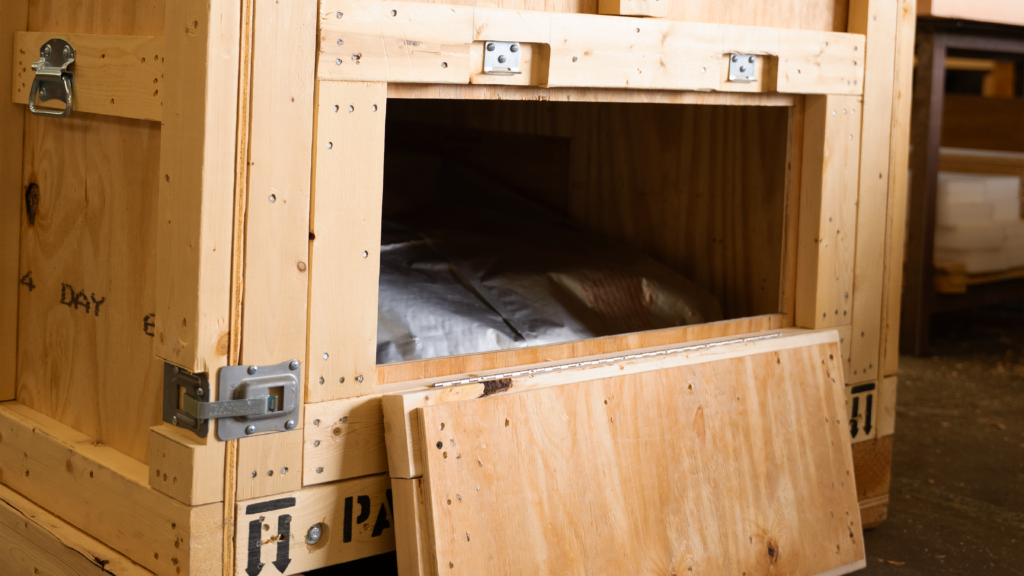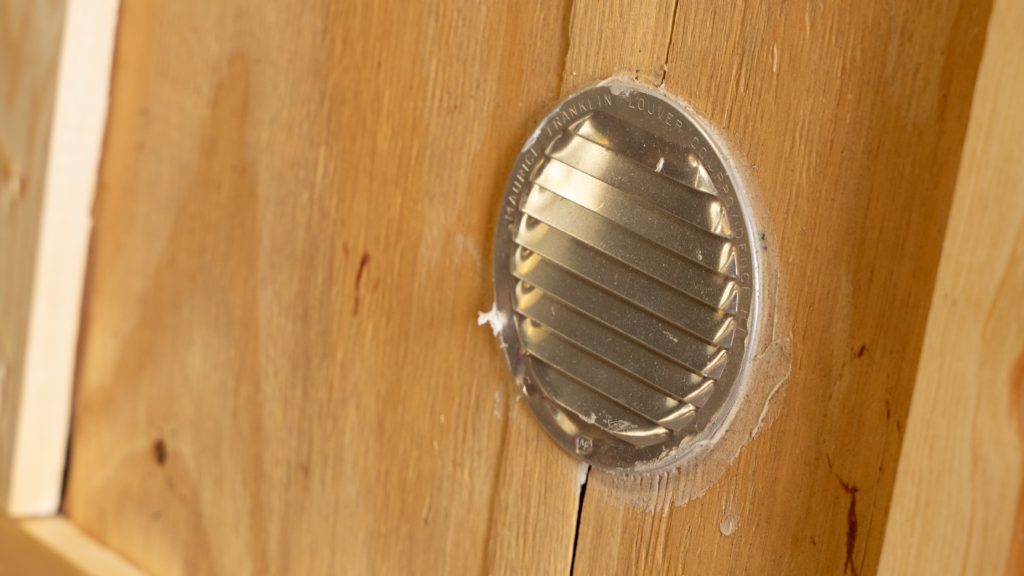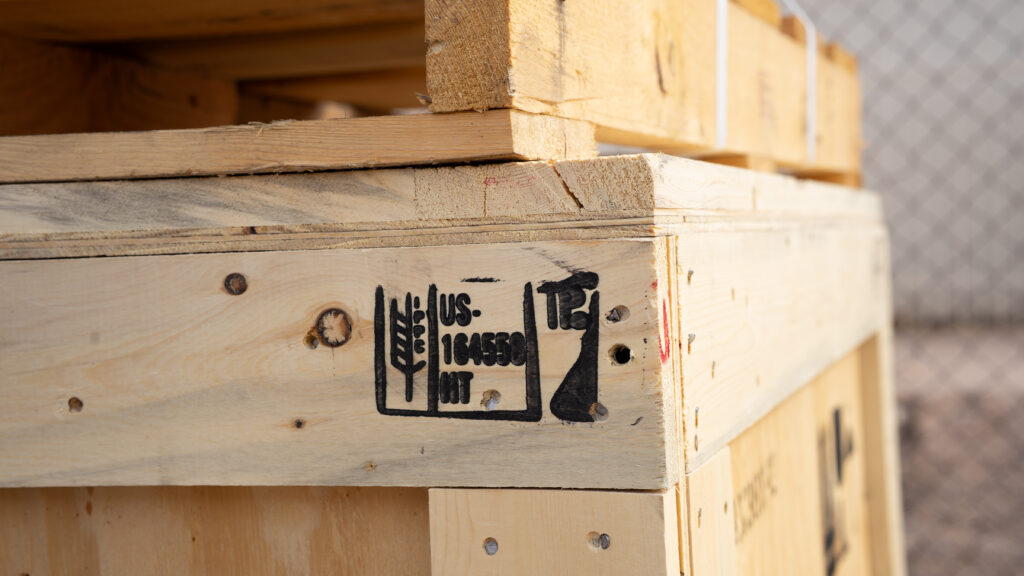How to Speed Up Clearance and Avoid Delays
When it comes to designing crates for customs inspections, planning ahead can be the difference between smooth shipping and costly delays.
When shipping internationally, customs inspections are inevitable—but delays, fines, and damaged shipments don’t have to be. A key factor in smooth clearance is designing crates that are easily accessible for customs officers and K9 inspection units while maintaining security and protection.
At Crating Technology, we engineer crates that go beyond just protecting cargo—we design them to streamline customs clearance and prevent costly hold-ups.

Why Designing Crates for Customs Inspections Matters
Every shipment entering a new country is subject to security screening, which includes manual inspections, X-ray scanning, and K9 detection for contraband or restricted items. If a crate is difficult to access, it can result in:
- Shipping delays: Customs officers may need to manually open and repackage your crate, causing slowdowns.
- Increased costs: Repacking, storage fees, and penalties for non-compliance can quickly add up.
- Higher risk of damage: If inspectors must pry open a crate, they may inadvertently damage its contents.
To avoid these problems, crates should be designed with inspections in mind—making it easy for authorities to check cargo without compromising its safety or integrity.
How to Design Crates for Efficient Inspections
1. Built-in Inspection Panels
Instead of requiring customs officers to break open a crate, built-in access panels allow for quick, controlled inspections. These panels should:
- Be secure but easy to open for fast screening.
- Be clearly marked so inspectors know where to check.
- Use tamper-evident features, such as seals or locking mechanisms, to ensure cargo integrity.
By eliminating the need for full crate disassembly, access panels help keep shipments moving efficiently while reducing the risk of damage.

2. Proper Ventilation for K9 Screening
Drug-sniffing dogs and explosives detection units rely on airflow to detect contraband. If a crate is too airtight, it can slow down the screening process and raise red flags with customs authorities.
To facilitate K9 inspections, crates should include:
- Airflow openings or breathable materials that allow scent particles to escape.
- Strategically placed vents to ensure effective screening without compromising cargo security.
- Reinforced security features to prevent tampering while allowing for proper airflow.
By balancing security and accessibility, crates can pass through K9 inspections more efficiently, reducing hold-ups at customs checkpoints.

3. Clear Labeling & Documentation
With thousands of shipments passing through customs daily, properly labeled crates make inspections faster and smoother.
Exterior crate markings should include:
- Contents (e.g., “Electronic Equipment – Fragile”)
- Inspection instructions (e.g., “Open Here for Customs Access”)
- Security seals that indicate whether tampering has occurred
Required shipping & compliance documents should be:
- Attached securely in a visible pouch
- Protected from weather and handling damage
- Easily accessible to customs officers
Proper documentation reduces confusion and expedites processing, ensuring that shipments move forward without unnecessary delays.
4. Tamper-Resistant Yet Accessible Fasteners
Crates should be secure but easy to reassemble after inspection. Instead of nails, which require prying and can damage the crate, consider:
- Screws or bolts—Allow crates to be opened and resealed efficiently.
- Quick-release clips or latches—Provide security while enabling fast access.
- Tamper-evident locks and seals—Prevent unauthorized access and show if a crate has been opened.
By making reassembly simple, businesses reduce repacking time and minimize the risk of damage caused by hasty re-closing.
5. Compliance with Customs Regulations
Each country has unique shipping regulations, and non-compliance can result in costly delays. Key factors to consider include:
- ISPM 15 Compliance – Heat-treated, stamped wood for international shipping approved by IPPC.
- Weight and Size Restrictions – Ensuring crates meet air, sea, and land freight regulations.
- Security Requirements – Adhering to specific guidelines for high-value or restricted goods.
Understanding destination-specific regulations ensures that crates are pre-approved for shipping, avoiding last-minute issues at customs.

The Bottom Line
Well-designed, customs-friendly crates mean faster clearance, lower costs, and fewer shipping headaches. By incorporating inspection panels, K9 ventilation, clear labeling, tamper-resistant fasteners, and compliance measures, businesses can ensure their cargo moves smoothly across borders.
At Crating Technology, we create custom crating solutions that prioritize security, efficiency, and compliance—helping shipments get where they need to go without unnecessary delays.
Need a customs-friendly crate? Contact us today.



